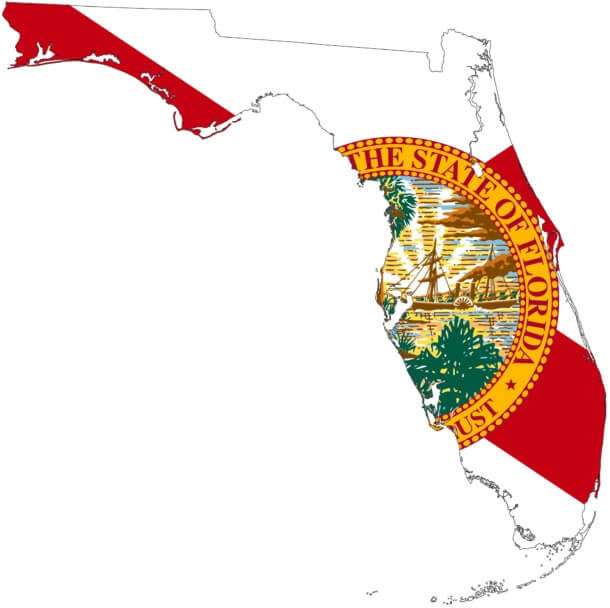by Chris Calton
In the first episode of the new season of Historical Controversies, which will focus on the sectional crises that led to the Civil War, I gave a brief explanation of my problem with the “Tariff Thesis” for the cause of southern secession. My arguments on the subject were the primary subject of criticism for the episode, and I feel it may be worth offering a more detailed explanation as to why I reject this popular interpretation for the cause of secession.
It is worth mentioning that although this article is only intended to address the tariff thesis for southern secession, there is also a separate tariff thesis — the “Tariff War Thesis” — which states that tariff revenues were the reason for Lincoln’s desire to wage the war. Although I reject both tariff theses, Tariff War Thesis is, at least, more plausible. Although many people combine both tariff theses into a single interpretation of secession and the war, some historians only maintain one while rejecting the other.
The Tariff and Southern Secession
The expositors of the tariff thesis for southern secession point to the nullification crisis that grew out of a protective tariff of 1828, known by the South as the “Tariff of Abominations.” As I discussed in the podcast, John C. Calhoun secretly wrote the South Carolina Exposition and Protest, which argued that individual states have the right to nullify federal laws that they deemed unconstitutional. In 1832, after a new tariff bill was passed (which actually lowered duties, but was still criticized for being protectionist), South Carolina passed a nullification act and started mobilizing troops to defend against the threatened aggression by the Andrew Jackson administration, which came in the form of a “Force Bill” passed by Congress to empower the president to use the military against the nullifying state.
The crisis was averted after Henry Clay stepped up with a compromise tariff that offered to lower duties gradually over a period of years (the new bill, interestingly, never addressed the conflict between a “protectionist” and a “revenue” tariff, the latter of which was considered to be constitutional by southerners).
In the early 1830s, it is fair to say that tariffs were a legitimate cause of controversy between the North and the South (or, at least, South Carolina, which was the only state that took real action in response to the tariff). But even in these years, there is reason to question whether tariffs were the sole reason for the dispute. John Calhoun himself, as revealed in a private letter to Virgil Maxy written in 1830, said:
I consider the Tariff, but as the occasion, rather than the real cause of the present unhappy state of things. The truth can no longer be disguised, that the peculiar domestick institutions of the Southern States, and the consequent direction which that and her soil and climate have given to her industry, has placed them in regard to taxation and appropriation in opposite relation to the majority of the Union; against the danger of which, if there be no protective power in the reserved rights of the states, they must in the end be forced to rebel or submit to have . . . their domestick institutions exhausted by Colonization and other schemes, and themselves & children reduced to wretchedness. Thus situatied [sic], the denial of the right of the state to interfere constitutionally in the last resort, more alarms the thinking than all other causes.
At least in Calhoun’s view, it is clear that the institution of slavery — often referred to euphemistically as the “peculiar institution” — was threatened by northern anti-slavery schemes such as “Colonization.” Calhoun reveals quite clearly that even during the tariff dispute, the fear of administrative usurpations of the constitution would threaten the survival of slavery.
In fact, some of the arguments in favor of the tariff thesis for secession have pointed out that slavery was dying out, so it is unlikely that this would have motivated southern action. One article on the subject says, “Slavery was actually on the wane … [but] the issue of slavery provided sentimental leverage [to rally public opinion for the Union war effort], whereas oppressing the South with hurtful tariffs did not.”
The first problem with this argument is that the North never made slavery the issue upon which to rally public opinion in support of the war. Quite the opposite was true, as Lincoln made clear himself that the goal was to maintain the union, and that he had no desire to end the institution of slavery. In fact, even though anti-slavery sentiments had become more common among northerners, such views were still held by a small enough percentage of the population that appeals against slavery would never have been successful in gaining support for the war effort. This is an argument that is designed to appeal to modern sentiments (and ignorance), but depends on the complete denial of historic fact.
The second problem with this argument is that the dying out of slavery was explicitly a motivation for southern action to protect the waning institution. Leading up to the Civil War, southern “filibusters” were trying to re-establish slavery in areas of the world in which it had already died, such as Nicaragua, where southern slaveholders attempted to set up a new government in which slavery was re-legalized. Southerners also advocated the annexation of Cuba in order to add a new slave state to the union.
Most significant was the small-scale war that took place in Kansas during the 1850s, known as “Bleeding Kansas,” in which pro-slavery “Border Ruffians” from Missouri agitated for slavery through violence, which drove many anti-slavery activists like John Brown to respond in kind, and voter fraud to establish a pro-slavery government. The pro-slavery government of Kansas even instituted a slave code that made it a criminal offense to speak out against the institution of slavery.
Kansas was the stage for this controversy because it shared a border with Missouri, and slave owners were afraid that a free Kansas would provide a new haven for their fugitive slaves (which ultimately was the case, as anti-slavery guerillas like John Brown and James Montgomery engaged in raids to help free Missouri slaves).
So it might be correct to say that slavery was on its way out, but the dying institution was one of the reasons the South wanted to secede; southerners were trying to hold on to their peculiar institution.
But most importantly, when trying to argue that the southern secession was motivated by tariffs is the complete lack of evidence on the matter, and the volumes of evidence to support the slavery thesis. The secession documents themselves provide the most straightforward evidence. Although the second wave of secession was motivated largely by Lincoln’s mobilization of troops to wage war on the South, as I mentioned in the episode, the first wave of secession was quite clearly motivated by slavery.
The secession documents themselves don’t really mention tariffs. Some people have argued that the South couldn’t openly admit that tariffs were the real issue because they needed to impose tariffs to fund the Confederate government. In addition to the fact that this argument essentially boils down to arguing that “the absence of evidence is the evidence,” the actual context of the events refutes this logic.
South Carolina was the first southern state to officially secede. At the time of secession, South Carolina was hoping other states would join them, but there was certainly no guarantee of it. A “Confederate government” was an idea, but not a ratified reality. Furthermore, South Carolina was the primary agitator against tariffs in the 1830s, so the idea that they were afraid to use tariffs as the explicit reason for their secession is countered by the very episode promoters of the tariff thesis point to: the nullification crisis.
But South Carolina, along with the rest of the states in the initial wave of secession, had no worries about confessing the role of slavery in their decision. With zero mention of the tariff in its secession document, South Carolina made slavery the primary subject of their pronouncement. The most telling paragraph, in fact, is the one in which South Carolina justifies secession because of “an increasing hostility on the part of the non-slaveholding States to the institution of slavery, [which] has led to a disregard of their obligations [to enforce the Fugitive Slave Act of 1850].” The document then lists a number of northern states who “have enacted laws which either nullify the Acts of Congress or render useless any attempt to execute them” (emphasis added). Not only was South Carolina objecting to northern opposition to the Fugitive Slave Act, but it was hypocritically hostile to the use of nullification – a doctrine proposed by Calhoun himself for South Carolina to use against the tariffs of 1828 and 1832 – in opposition to the Fugitive Slave Act of 1850.
Additionally, at the secession convention, South Carolina fire-eater Laurence Keitt explicitly addressed the tariff question to the members of the assembly:
But the Tariff is not the question which brought the people up to their present attitude. We are to give a summary of our causes to the world, but mainly to the other Southern States, whose co-action we wish, and we must not make a fight on the Tariff question. …
African slavery is the corner-stone of the industrial, social, and political fabric of the South; and whatever wars against it, wars against her very existence. Strike down the institution of African slavery and you reduce the South to depopulation and barbarism. . . . The anti-slavery party contend that slavery is wrong in itself, and the Government is a consolidated national democracy. We of the South contend that slavery is right, and that this is a confederate Republic of sovereign States.
Keitt was appealing to a group of men of whom, roughly ninety percent owned slaves.
Other secession documents are equally clear about southern motivation to secede. In the opening of the Mississippi secession document, the legislature declares that “Our position is thoroughly identified with the institution of slavery.” The document then goes on to enumerate all the attacks on slavery that the South had suffered since “before the adoption of the Constitution” itself.
None of the secession documents mention tariffs. In the first wave of secession, slavery was the primary theme, and states’ rights were a secondary (and contradictory, considering the states who listed nullification of the Fugitive Slave Act among the northern offenses) justification.
It is important to stress, of course, that the Union apologists who argue that the Civil War was waged over slavery are distorting the history as well. Secession was one thing, and the war to end it was another, as Ryan McMaken succinctly reminded us in a recent article. The fallacy that the war was fought over slavery is based on the inappropriate application of algebraic logic to historical analysis: according to the transitive property of algebra, if secession was driven by slavery and the war was driven by secession, then the war must have been driven by slavery.
Continue: Did Tariffs Really Cause the American Civil War? | Mises Wire


